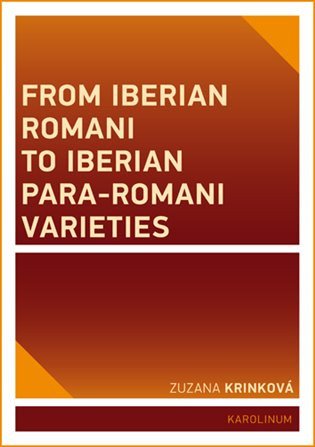Nalezené produkty
Nalezené kategorie
Nalezení autoři
Nalezené články: 140
Košík
je prázdný
je prázdný
From Iberian Romani to Iberian Para-Romani Varieties
Zuzana Krinková
Cena v prodejně:
350 Kč
Cena při objednávce v e-shopu:
-35 Kč
315 Kč
U dodavatele
poslední kusy na objednávku.
V prodejně do 5 dnů
K vyzvednutí po 15.12 13:00
Odesíláme do 5 dnů
od 59 Kč, dodání út 16.12
Kdy můžu zboží mít?
Produkt je u dodavatele, odesíláme ho ihned po naskladnění.
Osobní odběr | ||
| Prodejna Benešov - ZDARMA | po 15.12 | |
Výdejní místa | ||
| One Box, One Point | 59 Kč | út 16.12 |
| Zásilkovna | 69 Kč | út 16.12 |
| Zásilkovna SK | 95 Kč | st 17.12 |
Dodání na adresu v ČR | ||
| Stažení online | 0 Kč | po 15.12 |
| One Curier | 65 Kč | út 16.12 |
| Zásilkovna - domů | 99 Kč | út 16.12 |
| Zásilkovna SK - domů | 139 Kč | st 17.12 |
Uvedený termín u dodání domů a na výdejní místa je orientační. Balíček může přijít v rozmezí dvou dní po termínu.
The language contact of the inflectional Romani and Spanish, Catalan and other languages of the Iberian Peninsula began in the first half of the 15th century. The long-term and immediate contact between Romani and the language of the majority in several locations in Europe resulted in the emergence of what are known as the Para-Romani varieties – mixed languages which predominantly make use of the grammar of the surrounding language, while at least partly retaining the Romani-derived vocabulary. In the Iberian Peninsula, several Para-Romani varieties emerged. The process of their phonological, morphological and lexical evolution from the inflectional Iberian Romani is described in this book. In the opinion of the author, the original form of the Iberian Romani of the 15th century was similar to the "Early Romani" of the Byzantine period, which is thought to have ended by the 14th century when the Romani language started to disperse throughout Europe. The influence of Spanish (and other languages of the Iberian Peninsula) is evident not only in the morphology and syntax, but also in the phonology and semantics of the Iberian Para-Romani varieties. On the other hand, the Romani elements preserved in these varieties show conservative features as well as specific innovations, many of which can hardly be attributed to language contact. The description of the Iberian Para-Romani varieties is based on an extensive body of language material dated between the 17th and 21st centuries and also draws attention to some language phenomena in these varieties which, until now, have not previously been described.
| EAN | 9788024629360 |
|---|---|
| ISBN | 9788024629360 |
| Datum vydání | 03. 07. 2015 |
| Vazba | brožovaná vazba |
| Počet stran: | 272 |
| Nakladatelství: | Karolinum |
| Jazyk: | anglicky |
© 2025 Knihkupectví Daniela



